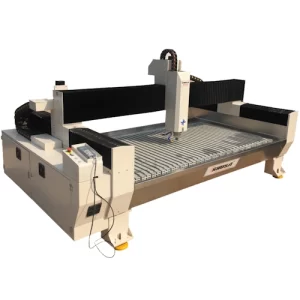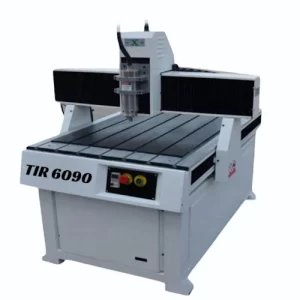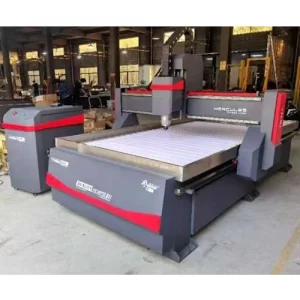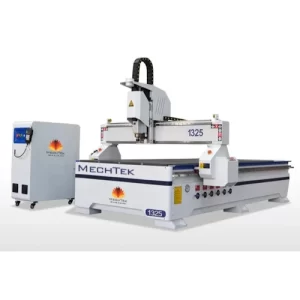CNC Machines
-
CNC Glass Router, 5.5 kW
Spindle Power 5.5 kWJob Material Stone, Brass, GlassSpindle Speed 24000 RPM₹909,999.00CNC Glass Router, 5.5 kW
₹909,999.00 -
TIR-6090-ST 3 Axis CNC Engraving Machine
Spindle Power 3 kWModel TIR-6090-STMachine Type 3 Axis₹350,000.00TIR-6090-ST 3 Axis CNC Engraving Machine
₹350,000.00 -
Stone and Metal CNC Router, 3 kW
Spindle Power 3 kWJob Material Metal, StoneSpindle Speed 15000 RPM₹700,000.00Stone and Metal CNC Router, 3 kW
₹700,000.00 -
CNC Cutting Router Machine, 6 kW
Spindle Power 6 kWModel MTR 1325 AJob Material Wood₹700,000.00CNC Cutting Router Machine, 6 kW
₹700,000.00
CNC Machines: A Comprehensive Guide to Types, Benefits, and Selection Criteria
Introduction to CNC Machines
CNC (Computer Numerical Control) machines have revolutionized the manufacturing industry, offering precision, efficiency, and automation in the production of complex parts. These machines are essential in various industries, including automotive, aerospace, electronics, and medical device manufacturing.
In this guide, we will explore different types of CNC machines, their benefits, key factors to consider when choosing the right CNC machine for your business, and maintenance tips to ensure optimal performance and longevity.
Types of CNC Machines
1. CNC Milling Machines
CNC milling machines use rotating cutting tools to remove material from a workpiece, shaping it into the desired form. They are highly versatile and widely used in machining applications.
Types of CNC Milling Machines:
- Vertical CNC Milling Machines: The spindle is oriented vertically, making them ideal for precision machining.
- Horizontal CNC Milling Machines: The spindle is placed horizontally, allowing for more efficient cutting of larger workpieces.
- Multi-Axis CNC Mills: These machines can move in multiple directions (3-axis, 4-axis, 5-axis) to create intricate parts.
2. CNC Lathes and Turning Centers
CNC lathes are used for cutting, drilling, and shaping cylindrical workpieces. The workpiece rotates while the cutting tool remains stationary.
Types of CNC Lathes:
- 2-Axis CNC Lathes: Basic turning and facing operations.
- Multi-Axis CNC Turning Centers: Capable of performing milling and drilling operations alongside turning.
- Swiss-Type CNC Lathes: Designed for precision machining of small and intricate parts.
3. CNC Laser Cutting Machines
These machines use laser beams to cut and engrave materials with extreme precision. They are widely used in metal fabrication, signage, and jewelry making.
Types of CNC Laser Cutting Machines:
- CO2 Laser Cutting Machines: Used for cutting non-metal materials like wood, acrylic, and plastics.
- Fiber Laser Cutting Machines: Ideal for cutting metals such as stainless steel and aluminum.
- Nd:YAG Laser Cutting Machines: Used for specialized applications requiring high precision.
4. CNC Plasma Cutting Machines
Plasma cutting machines use a high-temperature ionized gas (plasma) to cut through electrically conductive materials such as steel, aluminum, and copper.
Applications:
- Metal fabrication and industrial manufacturing.
- Automotive body panel production.
- Construction and shipbuilding industries.
5. CNC Electrical Discharge Machines (EDM)
CNC EDM machines use electrical discharges to remove material from a workpiece. They are used for cutting hard materials and creating complex shapes.
Types of EDM Machines:
- Wire EDM: Uses a thin wire to cut intricate shapes.
- Sinker EDM: Uses shaped electrodes to mold metal parts.
- Hole Drilling EDM: Designed for drilling tiny, precise holes in hard materials.
6. CNC Waterjet Cutting Machines
Waterjet cutting machines use high-pressure water mixed with abrasives to cut materials. They are ideal for applications requiring no heat-affected zones.
Applications:
- Cutting metals, glass, ceramics, and composites.
- Aerospace and automotive industries.
- Architectural and artistic designs.
7. CNC Grinding Machines
CNC grinding machines use abrasive wheels to refine surfaces and achieve high precision in metal and non-metal workpieces.
Applications:
- Precision finishing in toolmaking and automotive components.
- Grinding hardened steel and alloys.
- Surface and cylindrical grinding.
8. CNC Routers
CNC routers are used for cutting and shaping wood, plastic, and soft metals. They are commonly found in woodworking, furniture making, and signage industries.
Types of CNC Routers:
- 3-Axis CNC Routers: Perform basic cutting operations.
- 4-Axis CNC Routers: Allow rotation along one axis for more complex cuts.
- 5-Axis CNC Routers: Offer advanced capabilities for intricate 3D designs.
Benefits of CNC Machines
1. High Precision and Accuracy
CNC machines operate with extreme accuracy, reducing human error and ensuring consistent part quality.
2. Increased Production Efficiency
Automated machining processes speed up production, reduce waste, and improve overall efficiency.
3. Versatility in Manufacturing
CNC machines can produce complex geometries across various materials, including metals, plastics, and composites.
4. Reduced Labor Costs
Since CNC machines require minimal operator intervention, they help lower labor costs and increase productivity.
5. Enhanced Safety
Automation reduces direct human interaction with cutting tools, minimizing workplace injuries.
6. Scalability
CNC technology enables businesses to scale production efficiently while maintaining quality standards.
Factors to Consider When Choosing a CNC Machine
1. Material Compatibility
Select a CNC machine that can handle the materials you plan to process, such as metals, plastics, or wood.
2. Machine Size and Work Area
Consider the size of your workpieces and choose a CNC machine with an appropriate work envelope.
3. Number of Axes
Machines with more axes (e.g., 5-axis) offer greater flexibility but may come at a higher cost.
4. Spindle Power and Speed
Higher spindle power and speed allow for faster and more efficient cutting operations.
5. Software Compatibility
Ensure that the CNC machine supports industry-standard CAD/CAM software for seamless operation.
6. Maintenance and Reliability
Opt for machines from reputable manufacturers that offer good after-sales support and spare parts availability.
7. Budget and Cost Considerations
Balance your investment with the expected return on investment (ROI) and operational requirements.
Maintenance Tips for CNC Machines
1. Regular Cleaning
Keep the machine free from dust, metal shavings, and coolant residues to prevent mechanical failures.
2. Lubrication of Moving Parts
Apply appropriate lubricants to prevent wear and tear on machine components.
3. Calibration and Alignment
Regularly check and adjust the machine’s calibration to maintain precision and accuracy.
4. Software and Firmware Updates
Ensure that the CNC control software is updated for improved performance and security.
5. Operator Training
Train operators on best practices for machine operation, troubleshooting, and maintenance.
6. Inspection of Tooling and Fixtures
Monitor and replace worn-out cutting tools and fixtures to maintain optimal machining quality.
Conclusion
CNC machines are indispensable in modern manufacturing, offering precision, automation, and efficiency. By selecting the right CNC machine and implementing proper maintenance practices, businesses can enhance productivity, reduce costs, and improve product quality. Whether you’re a small workshop or a large-scale manufacturer, investing in CNC technology will help you stay competitive in the evolving industrial landscape.




